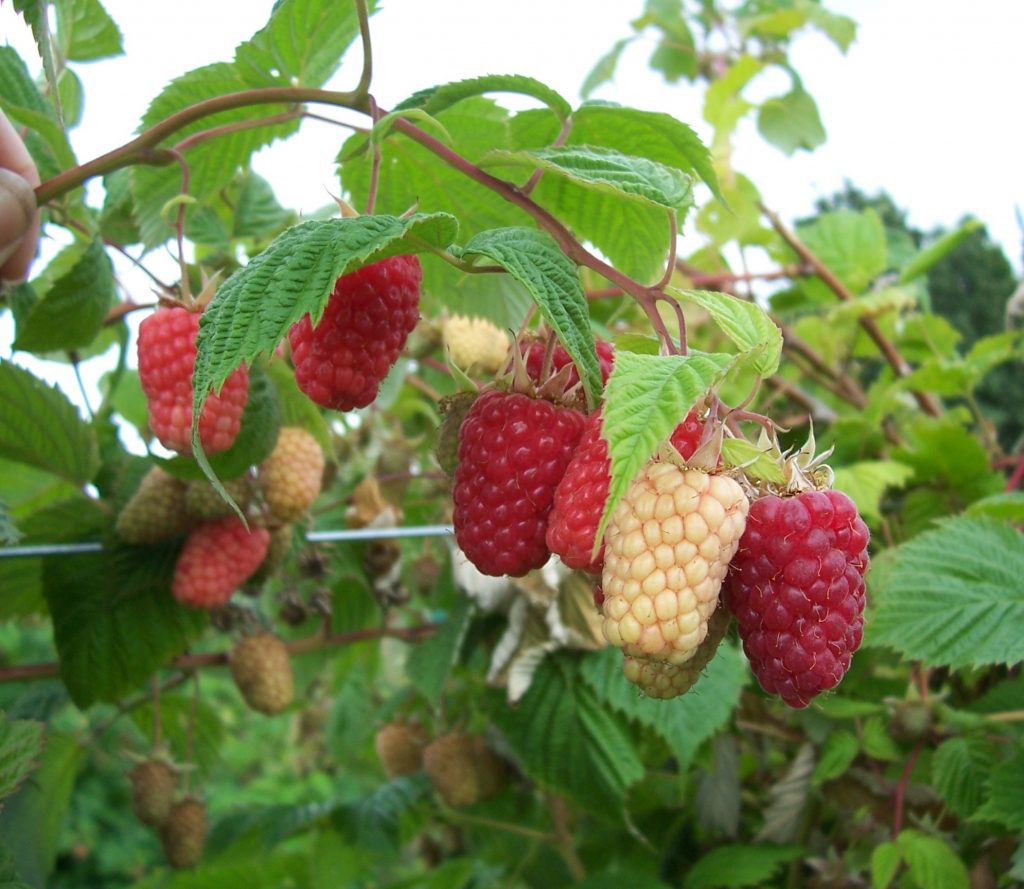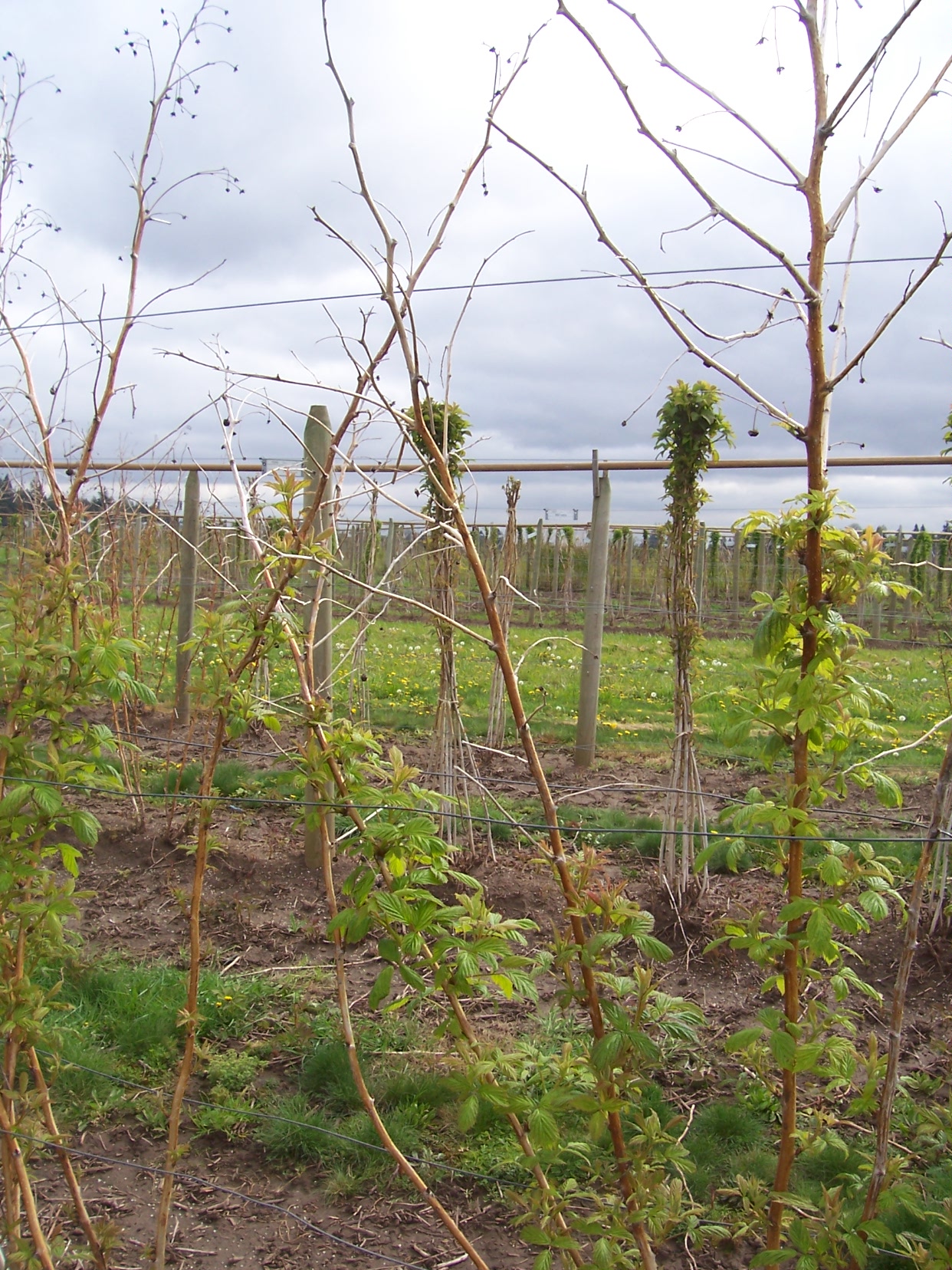No matter how muddy the spring, it’s time to slip on your boots and gloves and take care of blackberries and raspberries.
Established red raspberries, including Meeker, Cascade Delight and Vintage; black raspberries such as Jewel; and blackberries like Marion, Boysen, Columbia Star, Navaho, and Triple Crown, need some care in early spring in order to stay healthy and productive.
These caneberries should be fertilized starting in early spring when new growth begins, said Bernadine Strik, berry crops professor with the Oregon State University Extension Service.
For raspberries, apply 1 ounce of actual nitrogen (N) per plant. For blackberries, apply 2 ounces. Split the total amount of nitrogen into thirds, applying the first in early April, the second portion in late May, and the last portion in mid- to late June.
To calculate the amount of fertilizer to use, divide the recommended amount of actual nitrogen needed by the percent nitrogen in the product, which is shown as the first number on the front of the bag. For example, in raspberries if you are using a granular fertilizer such as 16-16-16 (16 percent nitrogen), then you would divide 2 by .16 to get 3.1 ounces of fertilizer. So, you’ll need to use about 6 ounces of product (2 ounces of fertilizer per application); double this for blackberries.
“It’s best to spread the fertilizer evenly around the plant over the surface of the soil in the row,” Strik said. “I suggest an area about 2½ to 3 feet wide by 3 feet long for raspberries. For blackberries go 5 feet long.”
Keep the area where berries are growing free of weeds by removing them by hand. You can use a layer of sawdust or bark mulch to help reduce germination of weed seeds. Don’t apply more than about 2 inches deep.
In all these caneberries, the plants are perennial with long-lived roots and crowns (base of plant), but the canes are biennial. They are called primocanes in their first year of growth. Then after they overwinter, they become floricanes. They flower, fruit and then die.
Foliage on the new primocanes should be a healthy green color. A pale green or yellow color may indicate nitrogen deficiency, Strik said. If the plants seem to lack vigor, apply a little more nitrogen fertilizer.
Pruning caneberries can be confusing because different categories of raspberries and blackberries have separate pruning requirements. Strik lays it out like this:
Erect and semi-erect blackberries (as well as black raspberries), need summer and winter pruning to improve yield and fruit size. Erect blackberries form stiff, upright branches that don’t need much trellising. Semi-erect cultivars are vigorous and need sturdy supports. They should be pruned during the growing season so that they form lateral branches. Cut the new primocanes to about 3 feet high in black raspberries and erect blackberries and 5 feet in semi-erect blackberries. Now is the time to prune those lateral branches to 18 to 24 inches long for black raspberries and erect blackberries or up to 4 feet long for semi-erect varieties.
For trailing blackberries, the new primocanes should not be pruned in summer. After harvest, floricanes die and should be cut to the ground and removed from the trellis in late August. The new primocanes should be trellised in August or late winter after severe cold temperatures have passed. Wrap these around a two-wire trellis.
Summer-bearing red or yellow raspberries do not need to be pruned in summer. Take out the dead floricanes after fruiting in late summer. From January through early March, when plants are dormant, remove all the weak, broken and diseased primocanes to crown or soil level. If your plants are grown in a hedgerow, narrow the row to about 6 to 12 inches wide. You can shorten canes to about 5½- to 6-feet tall to make training and picking easier. Tie these canes to the trellis wires.
Everbearing (or primocane-fruiting) red and yellow raspberries will produce fruit at the tips of the new primocanes in late summer through fall and can produce an early summer crop on the base of the floricanes. In winter, to prune for two crops a year, remove all of the primocane tips that fruited last year. The base of these canes will fruit in June or July, when they are floricanes, which should be removed when they die after harvest in July. The late-summer/fall crop will be produced on the new primocanes that grow next season. Keep the hedgerow of primocane-fruiting raspberries to about 12 inches wide during the growing season.
To prune everbearing raspberries to produce in late summer to early fall, cut all canes to ground level in late February or early March when plants are dormant. When the new canes emerge, keep the row width to 12 inches apart.
This spring is a good time to look for new, improved varieties and established favorites in your local nursery or mail-order catalog. Most nurseries will order plants if they don’t carry the one you want. Strik recommends:
• Trailing blackberries: New thornless Columbia Star and old favorites Marion and Boysen.
• Erect, late-season thornless blackberries: Navaho
• Semi-erect, last-season blackberries: Triple Crown.
• Summer-bearing red raspberries: new Cascade Delight and Chemainus.
• Yellow raspberries: New Cascade Gold and older favorite Meeker.
• Everbearing (also called primocane-fruiting) raspberries: Vintage is a new red; Anne is the best yellow.
• Black raspberries: Jewel
For more information about growing caneberries, check out these Extension publications: Growing Blackberries in Your Home Garden, Growing Raspberries in Your Home Garden, Blackberry Cultivars for Oregon and Raspberry Cultivars for the Pacific Northwest.



